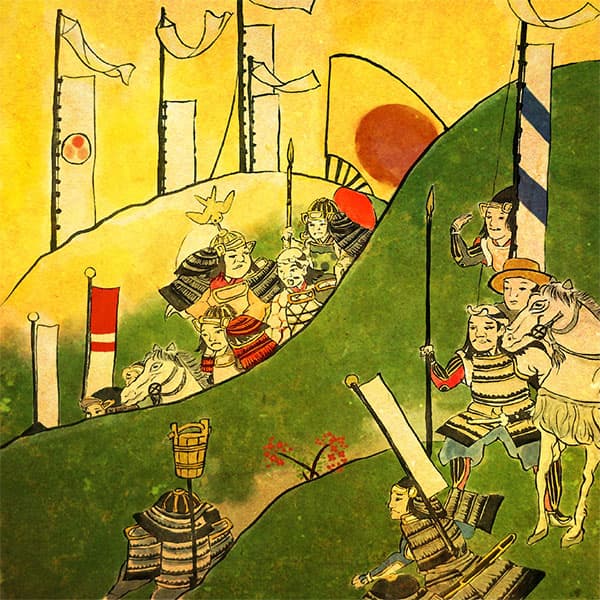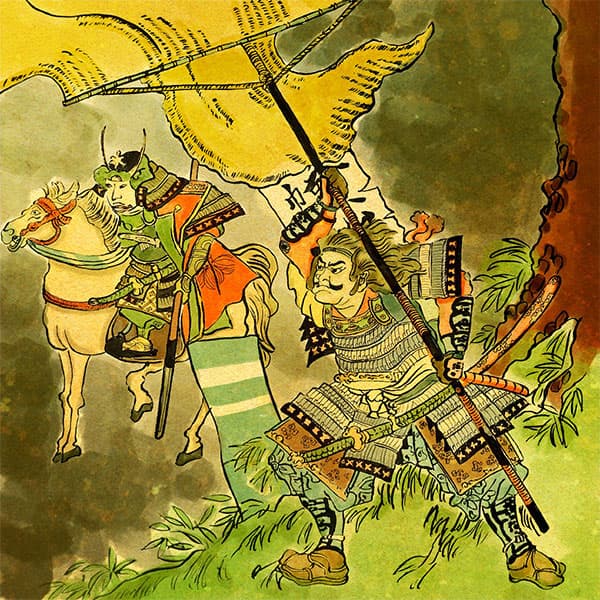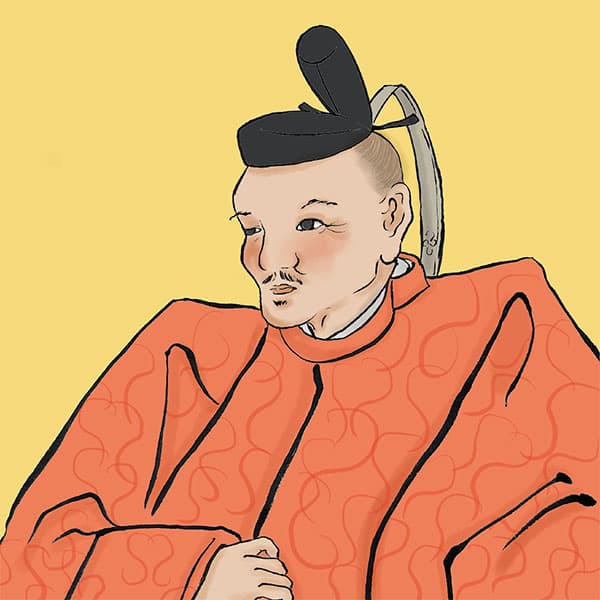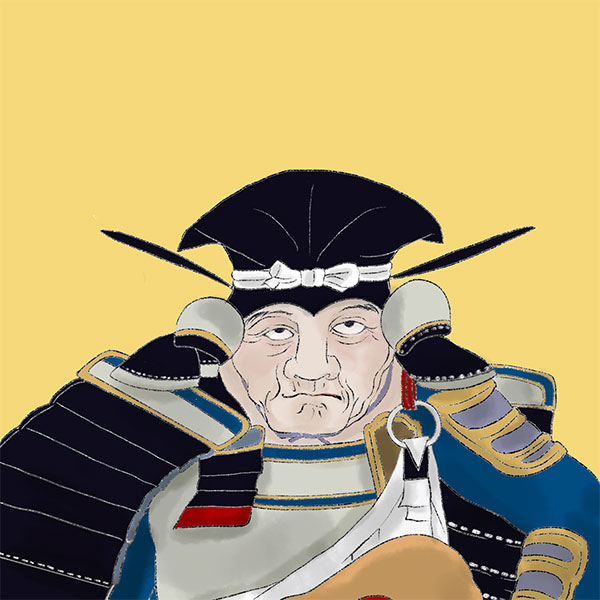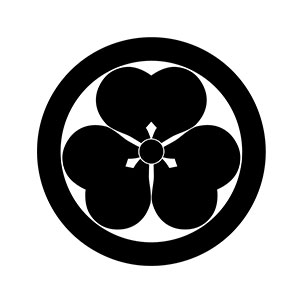- Inuyama domainFinally became independent in 4th year of Keio.
- The Inuyama domain is a special domain that was finally recognized as an independent domain by the Meiji government in 1868. During the Edo period, the Naruse family, which was the chief retainer of the Owari Tokugawa family, served as the lord for generations. Looking into the history of the Inuyama clan

Inuyama CastleInuyama City, Aichi Prefecture
- TOP
- Chubu
- Aichi prefecture
- Inuyama Castle
| Tenshu | Existing castle tower|National Treasure Gojo |
|---|---|
| Other name | Hakutei Castle |
| castle construction | 1469 |
| address | 65-2 Inuyama Kita Old Ticket, Inuyama City, Aichi Prefecture |
| telephone number | 0568-61-1711 |
| Opening hours | 9:00-17:00 (Admission until 16:30) |
| closing day | December 29th to 31st |
| Admission fee | Adults 550 yen / Elementary and junior high school students 110 yen |
Only the castle tower remains, and it is one of the ``12 castles with existing castle towers.'' It is also one of the five castles whose castle tower has been designated as a national treasure.
- Access to Inuyama Castle
- 15 minutes walk from Inuyama Station on the Meitetsu Inuyama Line/Meitetsu Komaki Line or Inuyama Yuen Station on the Meitetsu Inuyama Line.
HISTORYInuyama Castle, a national treasure that was a private property until the middle of the Heisei era
Inuyama Castle is a Hirayama castle built by Oda Nobuyasu, the uncle of Oda Nobunaga. It was located between present-day Aichi and Gifu prefectures, at a key transportation point with the Kiso River at its back. It is also known as "White Emperor Castle" and is one of the five castles whose castle tower is designated as a national treasure. It is also known as the castle tower, which was privately owned until 2004. Here, let's take a look at the history of Inuyama Castle.
- Castle built by Nobuyasu Oda
- Inuyama Castle is said to have its origins as a fort built by Oda Hirochika, the younger brother of Oda Toshihiro, said to be the founder of the Iwakura Oda clan, during the Onin War in 1469. The Iwakura Oda clan is the family that produced Oda Nobunaga.
Later, in 1537, Oda Nobuyasu, the uncle of Oda Nobunaga, abandoned Kinoshita Castle, his previous residence, and built a castle in the fort and moved there. This became the foundation of Inuyama Castle. Later, when Oda Nobuyasu died in a battle with Saito Dōsan (Battle of Kanokuchi), the castle belonged to his son Oda Nobukiyo, but in 1564 Oda Nobukiyo, his cousin Oda He clashed with Nobunaga, defeated him, and fled to Kai Province. After that, Inuyama Castle was lorded by Tsuneoki Ikeda, a vassal of Oda Nobunaga, and Katsunaga Oda, Oda Nobunaga's fifth son. - Served as a base during the battles of Komaki and Nagakute and the battles of Sekigahara.
- After Oda Nobunaga died in the Honnoji Incident, Inuyama Castle was subordinated to Oda Nobunaga's second son, Oda Nobuo, and Nakagawa Sadanari became the castle's lord. When the Battle of Komaki and Nagakute broke out in 1584, Tsuneoki Ikeda, the lord of Ogaki Castle, betrayed Nobuo Oda and captured Inuyama Castle. Afterwards, Inuyama Castle became Hideyoshi Hashiba's headquarters, hoping to fight against Tokugawa Ieyasu.
After the battle, Inuyama Castle was initially transferred to Oda Nobuo, but was later changed to become the territory of Toyotomi Hideyoshi's nephew Toyotomi Hidetsugu, and his father Yoshifusa Miyoshi served as the castle owner.
When Toyotomi Hidetsugu was forced to commit seppuku in the name of Toyotomi Hideyoshi in 1596, Sadakiyo Ishikawa became the lord of the castle. There are records that Inuyama Castle was renovated after Oda Nobunaga's death. In 2021, Inuyama City announced at a press conference that the timber used for Inuyama Castle was found to have been felled between 1585 and 1588, based on tree-ring dating. I am.
In other words, it was proven that Inuyama Castle was rebuilt into its current form after 1588.
When the Battle of Sekigahara broke out in 1600, Inuyama Castle, along with Gifu Castle and Takehana Castle, became a base for the Western Army. Sadakiyo Ishikawa, Sadayasu Kato, Kazumasa Seki, Shigemon Takenaka, and others were placed there, but with the fall of Gifu Castle, all the feudal lords except Sadakiyo Ishikawa defected to the eastern army, and Sadakiyo took control of Inuyama Castle. He became the general of a defeated army. - During the Edo period, it became the residence of the chief retainer.
- When Tokugawa Ieyasu established the Edo Shogunate, Inuyama Castle became the residence of the Owari clan's chief retainer. The official name of tsuke karō is otsuke karō, and it refers to a person who was ordered by the shogun to become the chief retainer of a daimyo. They had a higher status than ordinary retainers and had the privilege of having an audience with the shogun. Inuyama Castle was the residence of Naruse Shimo, the first lord of the Owari Tokugawa family who ruled the Owari domain, and the family of chief retainers of Yoshinao Tokugawa. The Naruse clan renovated Inuyama Castle from 1617 to 1620, installing a Karahafu bay window in the castle tower. From then until the end of the Edo period, it served as the residence of nine generations of the Naruse clan. The other name for Hakutei Castle was given by Ogyu Sorai, a Confucian scholar in the middle of the Edo period.
Although the Naruse clan had the power of a daimyo, they were not official daimyo. However, at the end of the Edo period, independence was finally granted, and although it only took a few years, the Inuyama clan was born. - Inuyama Castle after the Meiji era
- In 1871, Inuyama Castle was abandoned, and most of the turrets and gates that looked into the castle tower were demolished. The castle tower was also scheduled to be demolished, but in 1895, it was transferred free of charge to Masahiro Naruse, the last lord of Inuyama Castle, on the condition that the castle tower, which had been destroyed by the Nobi Earthquake, would be repaired.
Masahiro Naruse used his personal funds and donations from Inuyama citizens to restore Inuyama Castle. From then on, Inuyama Castle remained the property of the Naruse clan until 2004.
In 1935, Inuyama Castle was designated as a national treasure based on the laws of the time. After that, it was once designated as an important cultural property based on a revision of the law, but in 1952 it was designated as a national treasure again based on the Cultural Properties Protection Act. - Current Inuyama Castle
- Inuyama Castle was frequently damaged by natural disasters, including the Ise Bay Typhoon in 1952, and each time the Naruse family repaired the castle with private funds and donations. However, personal ownership reached its limit, and in 2004, the 11th generation owner, Masatoshi Naruse, passed from private ownership to the Inuyama Castle Hakutei Bunko Foundation.
Furthermore, Junko Naruse, the eldest daughter of Masatoshi Naruse, was appointed as the foundation's first president. In 2006, it was designated as one of Japan's top 100 castles, and has been restored to its current status through several surveys and restorations.
Read about incidents related to Inuyama Castle
Read biographies related to Inuyama Castle
History of the Inuyama clan, with Inuyama Castle as its domain office
| Domain office | Inuyama Castle |
|---|---|
| old area | Border between Owari Province and Mino Province |
| stone height | 113,000 koku |
| Fudai/Tozama | Fudai |
| main lord | Ogasawara family, Hiraiwa family, Naruse family |
The Inuyama domain was formally recognized as a domain and established as a domain due to the arrangement of the new government in January 1868. It was not recognized as a domain under the shogunate system of the Edo shogunate.
Inuyama Castle, a national treasure associated with the Oda clan, located on the banks of the Kiso River
Inuyama Castle, a national treasure located along the Kiso River, is a flatland castle known as one of the 12 remaining castle towers. Until 2004, it was a privately owned castle, which is a rare history, but in recent years, scientific research methods have led to the theory that it is the oldest wooden castle tower in Japan. Here, we will explain the charms and highlights of Inuyama Castle.

- What is Inuyama Castle?
- Inuyama Castle, located in Inuyama City, Aichi Prefecture, was built on top of a hill about 88 meters high along the Kiso River. With the Kiso River at its back, and the castle located on a cliff, it is a typical "castle with a strong rear," making it difficult to attack from behind. The baileys are Honmaru, Sugi no Maru, Momi no Maru, Kiri no Maru, and Matsu no Maru, and are arranged in a stepped pattern to the south. The castle was surrounded by a moat around the castle town, and the castle and the town were integrated into a "togamae" structure.
Inuyama Castle is also known as "Baitei Castle." It is said that the Confucian scholar Ogyu Sorai, who lived in the mid-Edo period, gave it this name after Li Bai's poem "The Early Construction of Baitei Castle," which describes the "Baitei Castle" located in the Yangtze River basin in China. - History of Inuyama Castle
- Inuyama Castle is said to have been built in 1537 by Oda Nobuyasu, the uncle of Oda Nobunaga (there are various theories). A survey conducted in 2021 analyzed the wood used for the pillars and beams, and found that they were felled between 1585 and 1588, leading to the theory that it was built around that time. However, there are many cases of castles that reuse wood that had previously been used in other castles or temples, so further verification is awaited in the future.
After Nobuyasu's death, his son Oda Nobukiyo succeeded him, but he became an enemy of Nobunaga and the castle was seized, and Ikeda Tsuneoki took over the castle in his place. After that, various warlords served as the castle's lord, and in 1617, Naruse Masanari, a senior vassal of the Owari Tokugawa clan, became the lord of the castle, and the Naruse clan continued to serve as the lord of the castle. It was during Masanari's time that a major renovation of the castle tower was carried out, and it is said that it now has its current appearance.
Later, in the Great Nobi Earthquake of 1891, the castle tower was partially destroyed. Inuyama Castle was given to the Naruse family on the condition that the castle tower be restored. In 2004, ownership was transferred from the Naruse family to the Inuyama Castle Hakutei Bunko Foundation, where it remains to this day. - Highlights of Inuyama Castle: 1. The prestigious castle tower
- The castle tower of Inuyama Castle is a watchtower-style tower with three floors, four stories and two basement levels, and features a gabled roof and a karahafu (traditional Japanese gable) that is said to have been added by Naruse Masashige.
There is a cellar in the basement, where you can view the stone walls and thick beams that support the castle tower from the inside. Another feature is that the rooms on the first and second floors are surrounded by warrior-running fences. If you go up the steep staircase used to defeat enemies, you will arrive at the gable room on the third floor.
If you go up further, you will arrive at the top floor, the 4th floor. You will be greeted by a bright red carpet that has been there since the Edo period. The 4th floor is built in "shinkabe-zukuri" style, with exposed pillars and beams, and there are a total of four kato windows on the north and south sides. Both are high-class architectural styles.
Inuyama Castle has a balustrade and is the only national treasure that you can go out onto. The view of the Kiso River and Nobi Plain from the balustrade is spectacular, and if the weather is good you can see Mount Ontake, Gifu Castle, and even Nagoya Station Building. 


- Highlights of Inuyama Castle 2: Attached turrets and peach roof tiles
- Inuyama Castle has turrets to protect the entrance to the castle tower and allow for flanking attacks. Generally, each castle tower has one, but Inuyama Castle is the only one among the surviving castle towers that has two turrets, one in the southeast corner and one in the southwest corner. They are directly connected to the castle tower, so be sure to tour the interior of the castle tower as well.
The attached tower is a gabled gabled roof covered with real tiles. There are a total of four peach-shaped "peach tiles" on the two roofs. There are also four peach tiles on the karahafu on the north and south sides, all of which are different in shape. They act as lids to prevent rainwater from entering, and are also said to ward off evil spirits. 


- Inuyama Castle's highlights 3. The moat
- Inuyama Castle was built with the Kiso River to the north as its moat. In the Edo period, it was surrounded by dry and wet moats on other sides, but due to land reclamation work after the Meiji Restoration, almost none of these remain today.
Among them, the large moat on the west side remains to this day. It is about 8m wide and 3m deep, and has an inverted trapezoid shape. Some parts are covered with vegetation, but in many places the shape is easy to see. - Inuyama Castle's highlights #4: Lord Osugi
- On the east side of the castle tower, a dead cedar tree that has been there since the castle was built is enshrined as "Osugi-sama." The old tree is about 650 years old and was originally as tall as the castle tower of Inuyama Castle. It has been revered as a sacred tree that protects the castle, providing protection from lightning and typhoon winds.
Unfortunately, the cedar tree died around 1965, but it is still enshrined as "Osugi-sama" and is tied with a shimenawa rope. - Recommended photo spots at Inuyama Castle
- If you want to enjoy the collaboration between the Kiso River and the castle, we recommend taking a photo from the opposite bank across Inuyama Bridge. If you take a photo from Rhine Ohashi Bridge, you can get a beautiful shot of the Kiso River, the castle tower, and the two attached turrets. It's also nice to take a photo of the castle silhouette from Inuyama Bridge at dusk. However, be careful as the river becomes muddy when it rains.
If you want to take a close-up shot, the best place to do so is inside the Honmaru, especially during cherry blossom season.
From March to November, the Inuyama Castle Sightseeing Boat operates on the Kiso River. Why not enjoy the view of Inuyama Castle from the boat? 



- WriterNaoko Kurimoto(Writer)I am a former travel industry magazine reporter. I have loved history, both Japanese and world history, since I was a child. I usually enjoy visiting temples and shrines, especially shrines, and often do ``pilgrimages to sacred places'' themed around historical figures. My favorite military commander is Ishida Mitsunari, my favorite castle is Kumamoto Castle, and my favorite castle ruins is Hagi Castle. My heart flutters when I see the ruins of battle castles and the stone walls of castle ruins.
Inuyama Castle column
Introduction column by castle enthusiasts



















